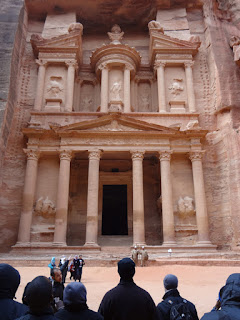As
darkness deepened in the valley, a small group descends from the city into a
well known grove of olive trees. As most
of the group stops, four of them continue a short ways on alone. Then a solitary figure walks on to a rock
outcropping and falls forward in prayer.
This is the moment of decision, and in this moment, we see the true
depth of love.
The
Garden of Gethsemane stands a few hundred yards from the eastern gate of the
Old City of Jerusalem, which is now called St. Stephen’s Gate. It is here that Jesus asked His Father if
there was another way, any way, other than the agony of the Passion. Yet in this moment we see Jesus’ resolve to
do the will of His Father, for in the same breath He says, “not as I will, but
as thou wilt.” (Matthew 26:39). This is
the place of complete surrender. Jesus,
who is both fully God and fully man, shows us both His humanity in His desire
to escape the agony and death that awaits Him and His divinity which is
completely in line with the will of God.
The Cross was not something forced upon Christ from a harsh and judging
God. The Cross is God coming down and
choosing to place Himself on the Cross for us.
By entering into the depths of our humanity, God frees us for new life
in and through Him. The only explanation
for this is complete and utter love, the love of God for us.
Such
a love asks us if we are willing to respond.
When someone does a loving act for us, the only appropriate response is
an act of love in return. Anything less
is hollow and demonstrates selfishness on our part. But a loving act in return, an act of
reciprocating love, shows our desire to truly be united with the one who loves
us. Gethsemane is for us also a place of
decision, a place where a choice is made.
Jesus loved His Father and us with everything He had, to the end. Will we love Him with the same love, with
everything we have, to the end?


























